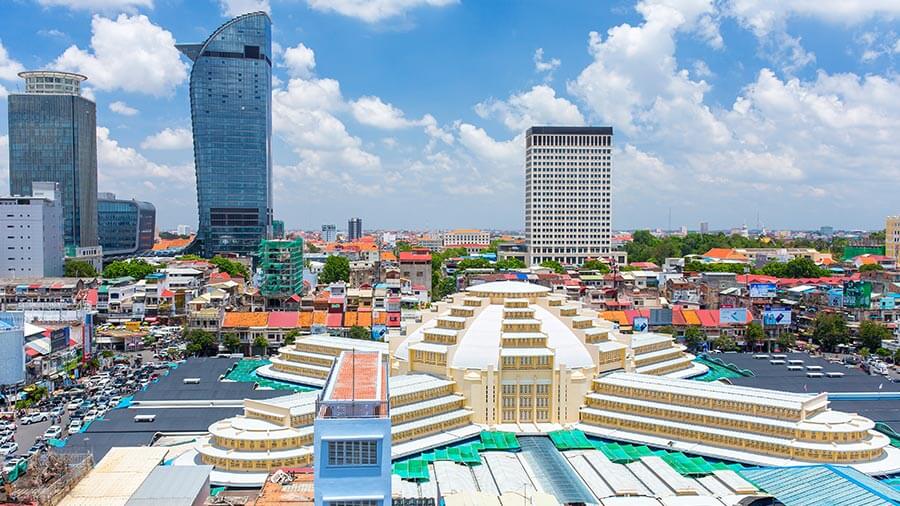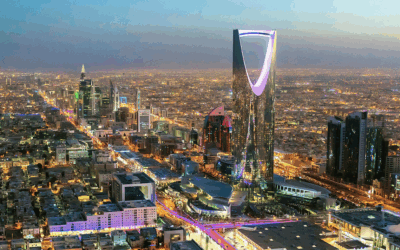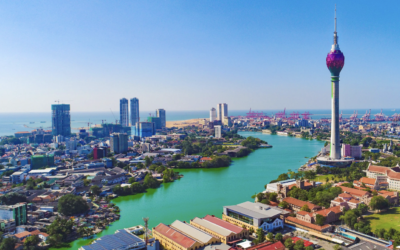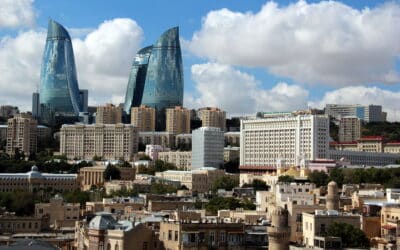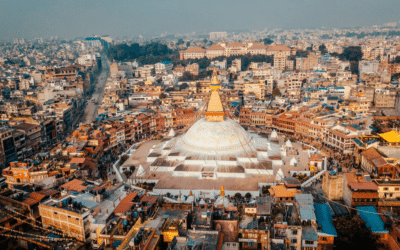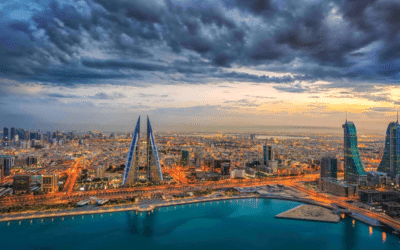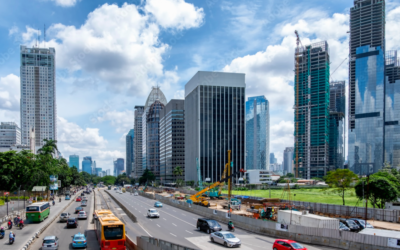Last updated May 25th, 2025.
Buying property in Cambodia is the best way to invest in the nation’s ongoing growth story.
Obviously, there’s no such thing as a recession proof country. Cambodia is about as close as it gets though.
The reason is simple: Cambodia is less correlated with the world economy as a whole.
We’re now in an era of globalization. As such, nearly almost every nation depends on its trade partners. If China, the US, or Europe gets sick, almost every other country does too.
The rare exceptions? Frontier real estate markets, like Cambodia’s, which aren’t as reliant on foreign capital to sustain their growth.
Cambodia property is still under the radar of most investors, although that’s quickly changing. Multinational firms like Samsung, Nike, Toyota and more are all setting up operations in its bustling capital of Phnom Penh.
Foreign investment activity in Cambodia grew by over 800% in the past decade and seems like it’s only getting started.
Manufacturing is also growing at an impressive level – especially due to the lower cost of labor compared to China, which is becoming too expensive.
Obviously, these factors are positive for Cambodian real estate prices, future demand for housing in Phnom Penh, and the nation’s economy overall.
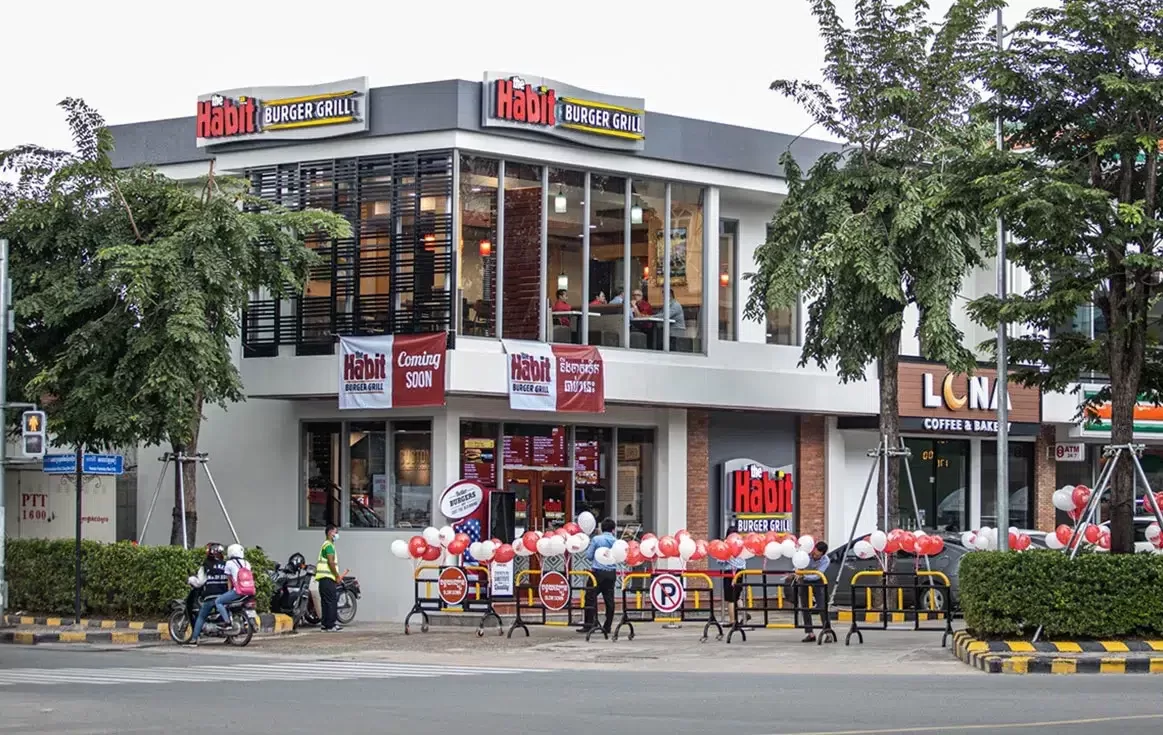
Large companies like LG, Yum! Brands, General Motors and many more are setting up offices in Cambodia.
Realizing the potential here in Cambodia, investment is flooding in. But a problem exists: well-paid expats, often making six-figure salaries from international firms, have issues finding apartments that meet their standards.
The inner core of Phnom Penh has a shortage of expat-quality housing in several areas, particularly in the city’s central districts like Daun Penh, Chamkarmon, and 7 Makara.
Because of this, you’ll find potential in buying older apartments, renovating them, and either renting them out or reselling them afterwards.
Even in 2025, it’s still possible to buy property in Cambodia for $50,000, put $20,000 worth of renovation work into it, and then have it valued at above $100,000 on the secondary market.
On the other end of the spectrum, some mid-sized towns in Cambodia like Kampot and Sihanoukville are now booming with activity, construction, and growth as the nation’s middle class becomes prominent.
These second-tier cities see practically zero foreign investment activity – it will inevitably arrive over the next decade though. First movers are always in the best position.
Either way, Cambodia is one of the most exciting and undiscovered places in Asia for property investment.
In this guide, we’ll cover the process of buying real estate in Cambodia as a foreigner, the best neighborhoods to invest in, housing prices, the top realtors, property taxes, and much more!
Can Foreigners Buy Property in Cambodia?
Cambodia not only allows foreign investment but encourages it arguably more than anywhere else in Southeast Asia. Setting up almost any type of business with 100% foreign ownership is easy.
A one-year, multiple entry visa costs $250 and takes a few days. Living in Cambodia with a long term visa is simple and cost-effective.
Foreigners can own strata titles for condominium units directly in their own name. But strata titles aren’t available if you’re looking at old shophouse apartments or buying land in Cambodia.
The general consensus is that new condo development projects are overpriced with a significantly higher cost per sqm when compared to buying a home in Cambodia or other types of landed property.
You can often find the best deals in older shophouse apartments left over from colonial times. Plots of land with development potential are also promising for active investors.
However, things get more complicated for these two types of properties since foreigners can’t directly own anything except a condominium unit.
You must either form a Cambodian land holding company (LHC), invest in a commercial trust, or buy into a REIT.
A land holding company is legally secure, but requires annual licensing fees and monthly tax filing. You’ll easily pay $10,000 annually for this structure, which eats into returns if you aren’t investing well above $1 million.
The profits could still be worth the added effort and costs if you’re buying property in Cambodia on a larger scale.
Hard Title vs. Soft Title Real Estate
Besides strata titles, another quirk in the Cambodia property market is the distinction between “hard titles” and “soft titles”. Both give you legal freehold status and must be owned by either a Cambodian company or person.
Yet there are many important differences between hard tiles and soft titles.
Hard titles are registered on the national government’s land registry and give property owners an indisputable right. Soft titles are registered through the local government, and at least in theory, aren’t as ironclad as hard titles.
In reality, over 90% of properties in Cambodia are held on soft titles and they serve as legal, government-recognized proof of ownership.
Practically any local bank will accept soft-titles as collateral for a secured loan, which means financial institutions consider them a solid enough form of ownership.
Most Cambodians even prefer soft title property because the transfer fees are a lot lower. Not only that, but the local government takes far less time for processing compared to the national government.
The transfer process can be finished in a few days rather than months – something that especially makes life easier if you’re flipping or renovating real estate in Cambodia.
With that said, proper due diligence is a good idea. Real estate investors will often hire a lawyer to speak with the neighbors, look through the land registry, and make sure the seller of a soft title property is indeed the true owner and has no encumbrances.
It’s noteworthy that the World Bank began the Land Management and Administration Project (LMAP). The program finances a comprehensive, fully-digital land registry across the nation.
Slowly yet surely, all land in Cambodia will convert from a soft title to a hard title through this initiative. It’s only a matter of time before all soft titles are changed free of cost and no longer exist.
You might read about “hard title vs. soft title” on other websites. But the notion of any major distinction between these two titles is mostly an invention of Cambodia’s expat community.
Some people claim soft titles are less secure. They would find out otherwise if asking local experts and checking what banks accept as collateral. If the title for Cambodia property is good enough for the bank, then it’s generally safe for investors.
How Much are Cambodia’s Property Taxes?
Annual real estate taxes are 0.1% of the property’s appraised market value in excess of 100,000,000 Khmer riel (about $25,000).
Needless to say, real estate taxes are very low in Cambodia and often aren’t even payable at all.
Rental income taxes are 10% for residents. For non-residents, rental income is instead taxed at a higher 14%. Various deductions may apply and can bring rates down significantly.
Unused land is taxed at a rather high rate of 2% of its market price each year. Because of this, you can’t “landbank” in Cambodia’s property market without paying an unreasonable amount of taxes.
If you buy land in Cambodia, the plot should be immediately developed and used to generate income. Or at least set up a fruit stand, or something. That should work too.
Is Buying Cambodia Real Estate Safe?
In a word, yes. Foreigners enjoy freehold ownership and total control over their property if things are done correctly.
Yet it’s important, particularly for soft titles, to speak with the neighbors and search the land office’s public record. Make certain there are no other claims over the property you’re buying.
Although rare, it’s not unheard of for people to list property for sale in Cambodia that’s mortgaged or otherwise disputed. This can be easily avoided with proper due diligence.
It’s also crucial to remember that foreign investors cannot own soft or hard title homes in Cambodia under their own name – only strata titles
Best Places to Invest in Cambodia
Cambodia is a fairly small nation with a population of just over 16 million. With that said, they have plenty of cities that, each for their own reason, are great places to buy real estate.
Some cities like Phnom Penh, Cambodia’s capital and largest city, are popular housing markets for very obvious reasons. Others like Sihanoukville and Siem Reap attract investors because of their rapid growth in tourist arrivals.
There are also mid-tier cities like Poipet and Battambang where we expect property prices will rise due to Cambodia’s rapid urbanization and population growth.
A lot less activity from foreign investors happens in those cities. But they arguably have more to gain from an economic boom compared to anywhere else in the nation, certainly if you’re able to figure out a way to buy land.
Phnom Penh
With a population of over 3 million and rising fast, Phnom Penh is the nation’s bustling capital and the center of Cambodia’s real estate market.
For the most part, anything of business or political importance at all happens in the capital. That’s why we suggest generally buying property in Phnom Penh rather than elsewhere in Cambodia.
Longtime travellers and residents of Southeast Asia would tell you that Phnom Penh is reminiscent of Bangkok about 30 years ago.
Nowadays, Bangkok is a modern metropolis of 16 million inhabitants and the most visited city by tourists in the whole world. Smart investors should take that as a cue.
While many people are buying real estate in Singapore or Bangkok instead of Cambodia, maybe investing in “the next Bangkok” or “the next Singapore” would generate superior returns?
That aside, Phnom Penh has much to offer any visitor – from highly authentic French cuisine to its casinos and street markets. The city’s temples are some of the world’s most ornate and are second in scale only to the size of its increasingly tall financial district.
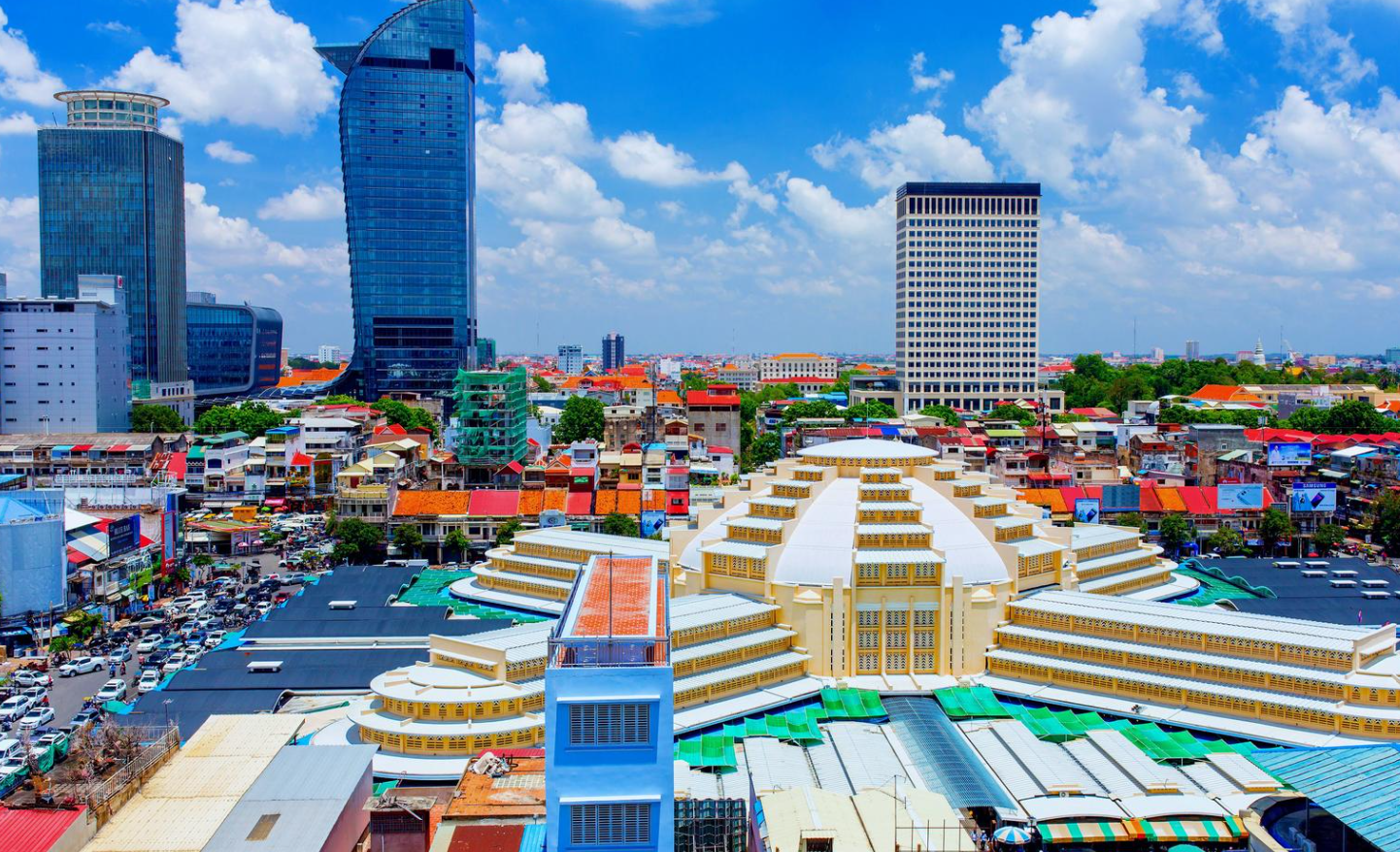
Phnom Penh’s art-deco Central Market is arguably the city’s most recognizable building. Housing demand is high in the Daun Penh area, yet compared to other neighborhoods like BKK1, there isn’t much supply of quality apartments.
Daun Penh
Daun Penh is Phnom Penh’s primary central business district (CBD). It’s home to the city’s Central Market and main commercial neighborhood, along with numerous government offices, the riverside, and Wat Phnom.
We believe property in Daun Penh will outperform other districts in Phnom Penh. It’s the first of three districts in Cambodia’s capital that should grow most over the long term.
Phnom Penh’s riverside area boasts some of the highest property prices in not just Daun Penh, but the whole country. Of course, the price of real estate in Cambodia are still a fraction of riverside apartments in Bangkok or Saigon.
Moving west, Phnom Penh’s tallest buildings are in the financial district with even more under construction. Street 110, the CBD’s focal point, sometimes has apartments for sale. They have potential to be resold at a premium to large developers in the future.
This part of town won’t stay low-rise for long. It’s only a matter of time before commercial property and malls replace central Phnom Penh’s colonial apartments.
Chamkar Mon
Positioned in the southern part of the city center, Chamkar Mon enjoys some of Phnom Penh’s most upscale residential neighborhoods. Property in BKK1 is especially desirable.
The areas referred to “BKK” (specifically BKK1, BKK2, and BKK3) are famous for their expansive villas and mansions, wide choice of fancy restaurants, and top-quality international schools.
BKK is also where Aeon 1, the city center’s largest mall, is located. Chamkar Mon is fast turning into central Phnom Penh’s best districts for expats.
Chamkar Mon has Cambodia’s biggest casino right down the street from it as well. Even hotel brands like Shangri-La are currently moving into this part of town and benefiting from Cambodia’s tourist boom.
7 Makara
West of both Daun Penh and Chamkar Mon, further away from the riverside, 7 Makara is not as pricey as either.
Many Cambodia property analysts predict this part of town is where much of Phnom Penh’s future expansion will happen as its rapid urbanization continues though.
Numerous cafes are already starting to pop up. International brands like Cold Stone Creamery, Burger King, and Krispy Kreme are opening their first stores in the country in 7 Makara district.
You could easily see why the area and its surroundings will get swallowed up by the city center in the next decade. This will help real estate values in 7 Makara converge to those elsewhere in the city center.
Some properties in the suburbs west of 7 Makara have investment potential too. Consider buying real estate in Tuol Kouk, Toul Tompoung, or in Phnom Penh’s distant suburbs out near the airport.
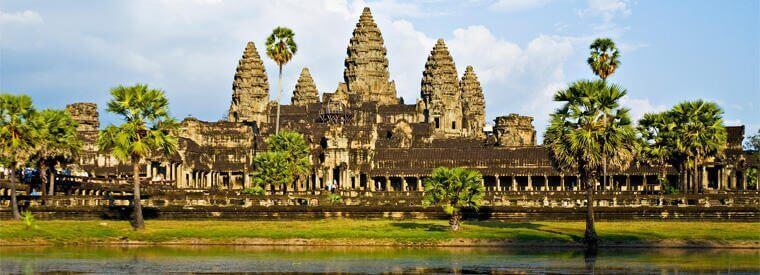
Siem Reap serves as the gateway to the ancient ruins of Angkor Wat. It’s the world’s largest religious structure, and the center of Cambodia’s tourism industry.
Siem Reap
Angkor Wat is the world’s largest religious structure. Today, it’s also one of Asia’s most visited attractions drawing in more than 2 million tourists each year. Siem Reap is located on the edge of Angkor Wat and Cambodia’s second largest city.
Siem Reap property will naturally benefit from Cambodia’s tourism boom. The city’s airport just finished a major renovation. It needed one because arrivals are increasing by about 10% each year.
There are many apartments in and around the city center. As such, your first idea might be to start a restaurant or hotel to make money off a thriving tourism sector.
However, that’s very difficult if you aren’t living in Cambodia. And it’s probably not the best way to invest in Siem Reap real estate either.
Siem Reap is instead an excellent place to cater to the middle-class local market. More Khmers enter the tourism industry as it grows.
Tons of these jobs are in Siem Reap and well-paid by local standards. Therefore, an abundance of employment opportunities means renting to Cambodia’s rising middle-class without being a slumlord is possible.
Siem Reap’s city center is, with a few rare exceptions, the only neighborhood where foreigners can find luxury housing geared towards them.
Outer parts of the city mostly have land and houses available for sale rather than apartments. They remain solid choices for investors who don’t mind a complex title structure and perhaps a bit of construction/repair work.
Sihanoukville
A four–hour drive from Phnom Penh (a time which will be cut in half by a new expressway), the coastline and islands around Sihanoukville boast several of Southeast Asia’s best beaches. They are mostly unheard of and often aren’t crowded.
The unknown beaches around Sihanoukville’s probably won’t stay that way for long – and change is already happening.
Surging Chinese foreign investment helped Sihanoukville property prices triple during the previous decade.
You can nonetheless still buy some of Asia’s cheapest beachfront and beach view property in Sihanoukville Finding absolute beachfront land priced at under $30 per square meter (about $3 per square foot) is possible in the city’s surrounding areas and islands.
Once you’re outside the coastal areas and travel east, the full urban area of Sihanoukville isn’t much to look at. But even here there’s potential for long term growth. All major cities in Cambodia are seeing their real estate markets benefit from similar demographic trends.
It’s worth staying clear of the large, expensive housing projects in Sihanoukville which are marketed toward foreigners.
They might be fine if you just want a lifestyle purchase. Houses and villas are way too big and illiquid as investments though. Stick with something nice yet not luxurious if your main goal is profit
Battambang
A perfect example of a city that’s growing fast, Battambang has a prime location right in the center of Cambodia’s most important rice producing province. It’s been a commercial hub for centuries and to this very day serves as a gateway between Phnom Penh and bordering countries.
Cambodia’s population and influence are growing at a pace rarely seen in the western world. While it’s a rather small nation of just over 15 million today, its total population should reach over 20 million by 2035 and continue growing from there.
It’s often the smaller and mid-tier cities that benefit from urbanization because they’re starting from a lower base. In less developed cities, you can “create something from nothing” in a way you couldn’t in the capital.
Battambang’s central area is, for the most part, the city’s only place to easily buy property as a foreigner. The suburbs have a few attractive houses while the outskirts have some well-priced land plots.
Yet both of these options require forming a land-holding company. Furthermore, you need to develop any unused land immediately to avoid paying a 2% tax on its value each year.
Poipet
Poipet is similar to Batttambang in that it’s close to the Thai border (even closer in fact). It’s a second-tier city and will benefit from continued regional trade and urbanization.
The difference is that gambling contributes to the Poipet economy far more than agriculture and markets.
Gambling is illegal just across the border in Thailand. Of course, there are Thais who still wish to gamble and Poipet is the closest city to Bangkok where it’s possible.
Hordes of Chinese tourists are increasingly choosing Cambodia over Macao for their gaming adventures – a major boon to Poipet’s economy.
The city’s borders are also constantly expanding in line with its population growth. Property investments on the edge of the Poipet’s central core should appreciate in value and perform well over the long term.
Poipet has plenty of apartments and houses in the suburbs to the north/northeast of the city’s center as well. Many of them could be a good investment if you’re willing to pay attention to it and keep it managed.
How to Renovate Apartments in Cambodia
The best way to make money in Cambodia real estate is often through buying an unrenovated shophouse apartment, then spending money fixing it and bringing it up to modern standards.
You’ll need a contractor if you’re doing a renovation job, which means construction work, dealing with laborers, and getting a fair price.
Let’s face it: it’s sometimes hard to find an honest contractor in the developed world let alone in frontier markets.
Contractors in developing Asia may not always be up to international standards – or they could simply be trying to rip you off.
Finding a contractor based on referrals and local connections is crucial. Honest, fair contractors exist in Cambodia. But you absolutely must know the correct people and have an awareness of the local market.
Be aware that if you buy the upper floor of a shophouse apartment in Cambodia, you own the building’s roof and usually the right to build on top of it. You must first obtain district approval though.
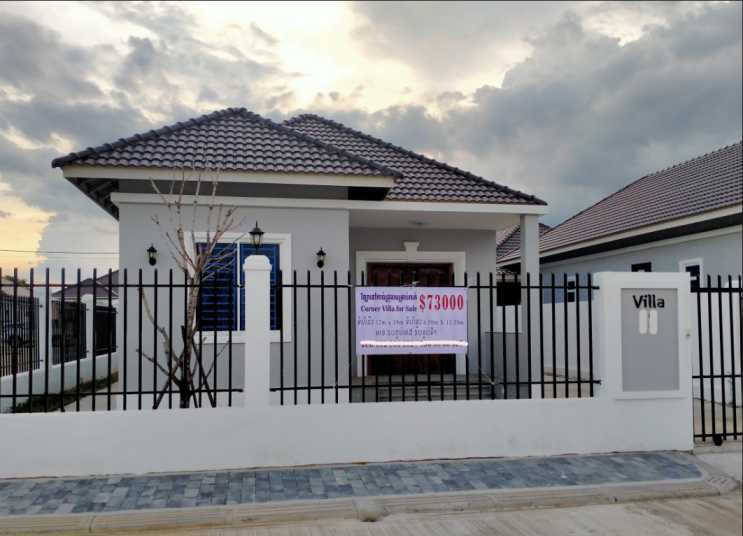
Locals often want to save themselves the 3% brokerage fee instead of using a real estate agent. Signs like the one above show a property is listed for sale – and no, usually they aren’t in English.
Hiring Realtors in Cambodia
For newcomers to property in Cambodia, a proper real estate agent is a must. This is another one of those types of services that sometimes aren’t up to international standards in frontier markets.
Finding a quality agent outside of Phnom Penh, Siem Reap, or Sihanoukville is unlikely. That’s because locals don’t really use property agents in Cambodia. Khmers usually find real estate for sale through local circles and word of mouth.
Realtors merely simplify the process if you’re a foreigner. But for most investors, going through a Cambodian real estate agent is probably a great idea unless you speak Khmer and don’t mind dealing with local bureaucracy.
It’s also worth noting some properties won’t be available if you use an agent. Whether doing so is practical or not, many Khmers would rather market a property themselves and save 3% of the sale value.
Sellers typically pay the entire brokerage commission when you’re buying real estate in Cambodia through an agent.
Therefore, lots of “listed” homes will simply have a sign outside in Khmer script that says the property is for sale along with a contact number.
Such opportunities require speaking or knowing someone who speaks Khmer. Yet some of the best deals are found riding around on a motorcycle and writing down notes about property for sale.
With all that said, the best real estate agents in Cambodia provide a valuable service – especially for the new and uninitiated.
More Details About Property in Cambodia
The rules in Cambodia’s lawbook aren’t necessarily how things work in practice. Some of the advice mentioned in this guide either doesn’t apply across the board or is more nuanced than it might seem at first.
For example, soft titles transfer at the district level instead of the national level. Processes and timeframes vary based on where you buy property because of this.
Several “neighborhood chiefs” are infamous in their bureaucracy, asking for bribes unless you wait two months for the title transfer. Sometimes you may run into a small problem. Typically people will offer to “fix” any small problems.
It’s worth mentioning the US Dollar is the currency of choice for any purchases above a small amount. The fact that Cambodia uses the dollar is obvious to investors familiar with the country, but perhaps new information to those who aren’t.
Regardless of your own view on the dollar’s future, denominating your assets in the greenback is far better than most other Asian currencies. Some like the Indonesian rupiah and Vietnam’s dong have performed badly for years due to inflation.
Thus, buying real estate denominated in the US Dollar is a positive and unique aspect of investing in Cambodia.
Is Cambodia Real Estate a Good Investment?
It’s not the usual investment recommendation. But that’s precisely the reason why Cambodia property has so much potential.
Simply put: you can profit by investing in frontier markets that aren’t yet overrun by foreign capital and large investment firms.
Top news outlets like Bloomberg or CNBC don’t talk about real estate in Cambodia or Phnom Penh much. That’s a very good thing.
While everyone else hasn’t even discovered the Cambodian housing market, its GDP keeps climbing by over 7% annually.
Meanwhile, you can buy property in central Phnom Penh for barely over $1,000 per square meter. That’s roughly the same price as in far less developed capital cities like Karachi and Dhaka.
$1,000 per square meter is considered a global “floor” for real estate values, and it’s unlikely that prices will fall much below this level.
Cambodia’s economy as a whole relies on internal factors, like urbanization rates and population growth, moreso than the whims of the global economy.
The process of economic diversification continues here in Cambodia. Multinational firms, lured by low taxes and friendliness toward foreign investors, are now setting up shop and bringing high-salaried expats with them.
A rising middle class is obvious to anyone who visits Phnom Penh. New roads, ports, and other types of infrastructure are under construction all across the country.
More importantly, a nation once scarred by the atrocities of the Khmer Rogue not only moves, but leaps forward.
Cambodia’s best days are ahead of it – certainly with regards to its real estate market.
FAQs: Investing in Cambodia Property
How Much Does Cambodia Real Estate Cost?
The price you'll pay largely depends on location and build-quality. If you're buying an overpriced condo, these are often $3,000 per square meter or higher!
You'll find better deals with landed real estate or shophouse flats. It's possible to buy in the city center for $1,000 per square meter. Meanwhile, if you're looking outside Phnom Penh, real estate prices can become even less expensive.
Can Foreigners Buy Property in Cambodia?
Yes. Foreigners are allowed to own freehold condo units and strata title apartments under their own name.
However, things become far more complicated if you're buying a house in Cambodia. Land ownership is permitted for Cambodian citizens, certain types of companies, and trusts.
What's the Best Area to Buy Real Estate in Cambodia?
Phnom Penh's central neighborhoods have a limited amount of supply, and will almost inevitably see higher demand over the years.
We specifically suggest property in the 7 Makara, Daun Penh, BKK, and Chamkarmon districts which are four of Phnom Penh's most popular among both local and foreign buyers.
Can Foreigners Own Land in Cambodia?
No, foreigners cannot directly own land in Cambodia under their own name. There are nonetheless several ways to control and invest in land as a foreigner though, including through a landholding company (LHC), commercial trust, or REIT.
How Much is Real Estate Commission in Cambodia?
Realtors in Cambodia normally change a commission anywhere from 3% to 5%. In general, it's possible to negotiate a lower rate if the property being sold is more expensive.

